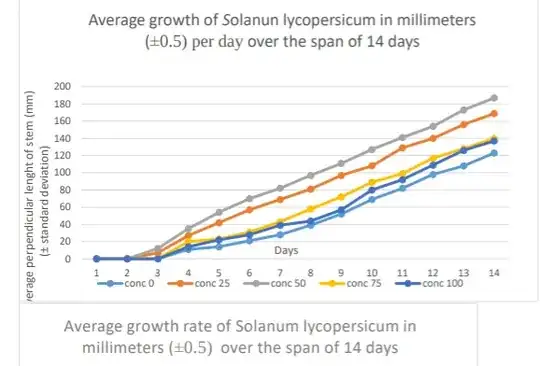I am doing a biology experiment about the effects of 5 different concentrations (0%,25%, 50%, 75%, and 100%) on plant growth. It was a 5×5 trial. From 0% to 50% my plant's height increased, with 50% being the highest. But from 50% to 100% my plants' height began to decrease or grew at a slower rate almost as slow as the 0%.
Before the experiment took place, I hypothesized that an increase in concentration will lead to an increase in growth in my plants. I planned to do an ANOVA one-way test. But given my data, I intend to do 2 ANOVA one-way test. (This is because I feel that one ANOVA test is more suitable when the data follows either an upward or downward trend, not both.) The first one for the 0% to 50%, do check for the statistical significance of the upward trend and the second one for 50% to 100% to check for the statistical significance of the downward trend.
Do you think this is the right thing to do?
Which statistical test is more suitable?
